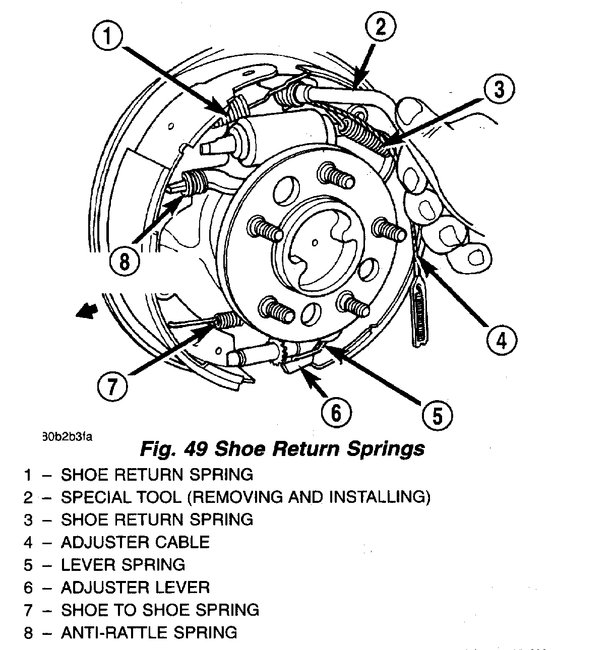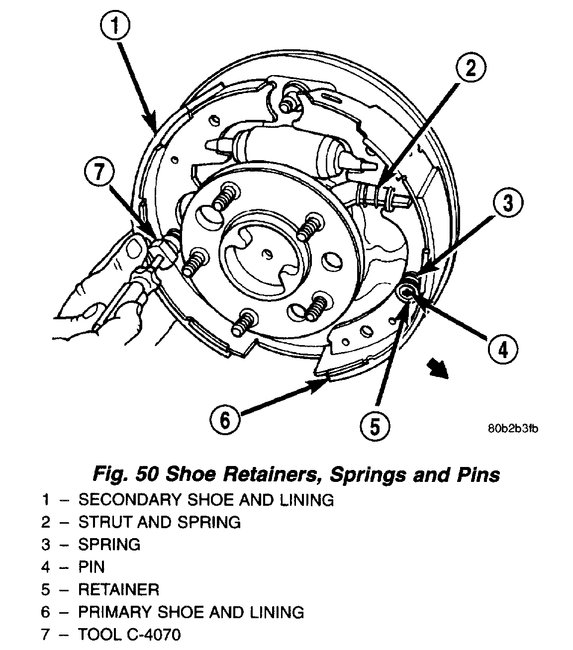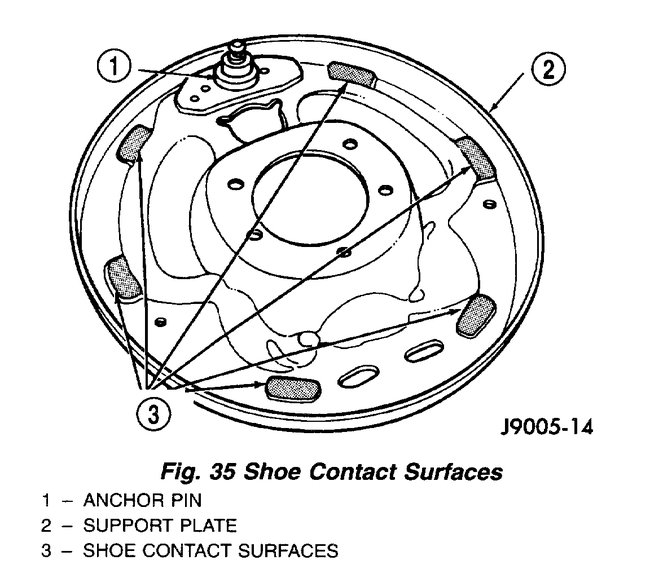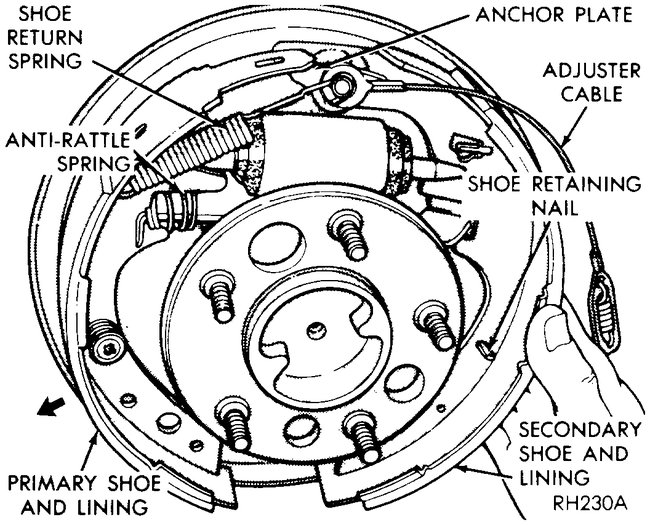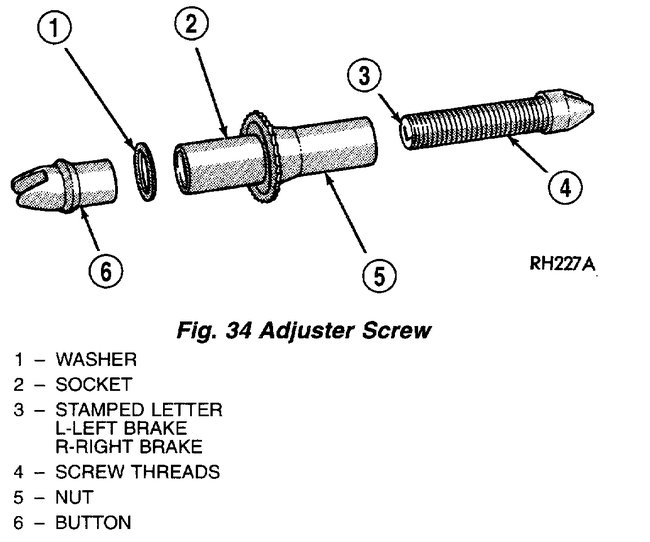Hi guys. Hope you don't mind if I jump in. I have owned a many Dakotas over the years. I have to start with a couple questions. First, can you describe the noise? Does it sound metallic? Next, does it change pitch when you apply the brake? Does it come from both sides? And one very important question. Are you certain you got the correct size shoes? The rear brakes on these vehicles came with either 9" or 10" drums. There is a chance they gave you shoes/drums that are incorrect. Also, when you remove the drum, is there any evidence as to where something may be rubbing? Also, there are components on this design that are specifically designed for left and right sides. Once last question. Did you lubricate the backing plate where the shoes make contact? That can actually cause the brakes to hang up.
Here are the specific directions for replacing the shoes. Review them and see if anything helps. It's simple to miss something.
_______________________________________________
The attached pics correlate with these directions.
BRAKE SHOE REMOVAL AND INSTALLATION
REMOVAL
1. Raise and support vehicle.
2. Remove wheel and tire assembly.
3. Remove clip nuts securing brake drum to wheel studs.
4. Remove drum. If drum is difficult to remove, proceed as follows:
a. Remove rear plug from access hole in support plate.
B. BInsert a thin screwdriver into access hole and push lever away from adjuster screw star wheel.
C. Insert an adjuster tool into brake adjusting hole and rotate adjuster star wheel to retract brake shoes.
5. Vacuum brake components to remove brake lining dust. If vacuum is not available, use water dampened cloths to remove dust.
6. Remove shoe return springs with brake spring plier tool.
Picture 1
7. Remove adjuster cable. Slide cable eye off anchor pin, then unhook and remove cable from adjuster lever.
8. Remove cable guide from secondary shoe and anchor plate from anchor pin.
9. Remove adjuster lever. Disengage lever from spring by sliding lever forward to clear pivot and work lever out from under spring.
10. Remove adjuster lever spring from pivot.
11. Disengage and remove shoe spring from brake shoes.
12. Disengage and remove adjuster screw assembly from brake shoes.
13. Remove brake shoe retainers and springs.
Picture 2
14. Remove secondary brake shoe from support plate.
15. Remove strut and spring.
16. Remove parking brake lever from secondary shoe.
17. Remove primary shoe from support plate.
18. Disengage parking brake lever from parking brake cable.
INSTALLATION
1. Clean and inspect individual brake components.
2. Lubricate anchor pin and brake shoe contact pads on support plate with high temperature grease or Lubriplate.
Picture 3
3. Lubricate adjuster screw socket, nut, button and screw thread surfaces with grease or Lubriplate.
4. Attach parking brake cable to lever, then connect lever to secondary shoe.
5. Install primary shoe on support plate. Secure shoe with new spring retainers and pin.
6. Install spring on parking brake strut and engage strut in primary.
7. Install secondary shoe on support plate. Insert strut in shoe and guide shoe onto anchor pin. Temporarily secure shoe with retaining pin.
Fig 7 Installing Brake Shoes
picture 4
8. Install anchor plate and adjuster cable eyelet on support plate anchor pin.
9. Install cable guide in secondary shoe and position cable in guide.
10. Assemble adjuster screw, then install between the brake shoes.
Picture 5
NOTE: Be sure the adjuster screws are installed on the correct brake unit. The adjuster screws are marked L (left) and R (right) for identification.
11. Install adjuster lever and spring and connect adjuster cable to lever.
12. Install secondary shoe retainers and spring.
13. Install shoe spring. Connect spring to secondary shoe first, then to primary shoe.
14. Verity adjuster operation. Pull adjuster cable upward, cable should lift lever and rotate star wheel. Be sure adjuster lever properly engages star wheel teeth.
15. Adjust brake shoes to drum with brake gauge. See: Drum Brake System > Adjustments
16. Install wheel and tire assembly.
________________________________________________
Let me know if any of this helps or if you have other questions. Just some food for thought. If everything is working properly, it may be the shoes themselves. I have had pads and shoes sound like they were rubbing while the brake was not being used. (Only heard at low speeds) and had to replace the brake pads/shoes to stop the noise.
Take care,
Joe
Images (Click to make bigger)
Saturday, March 30th, 2019 AT 7:46 PM
